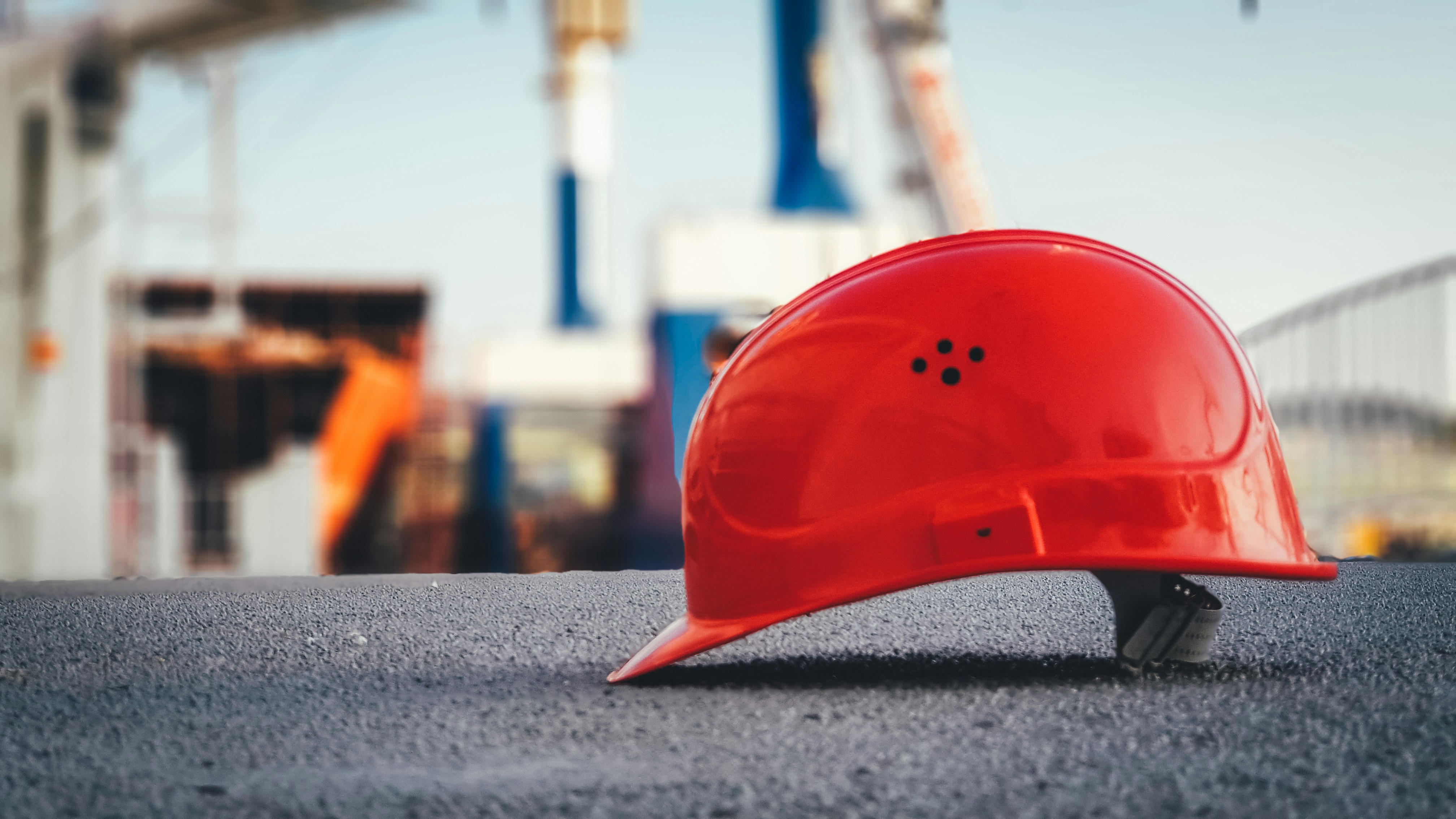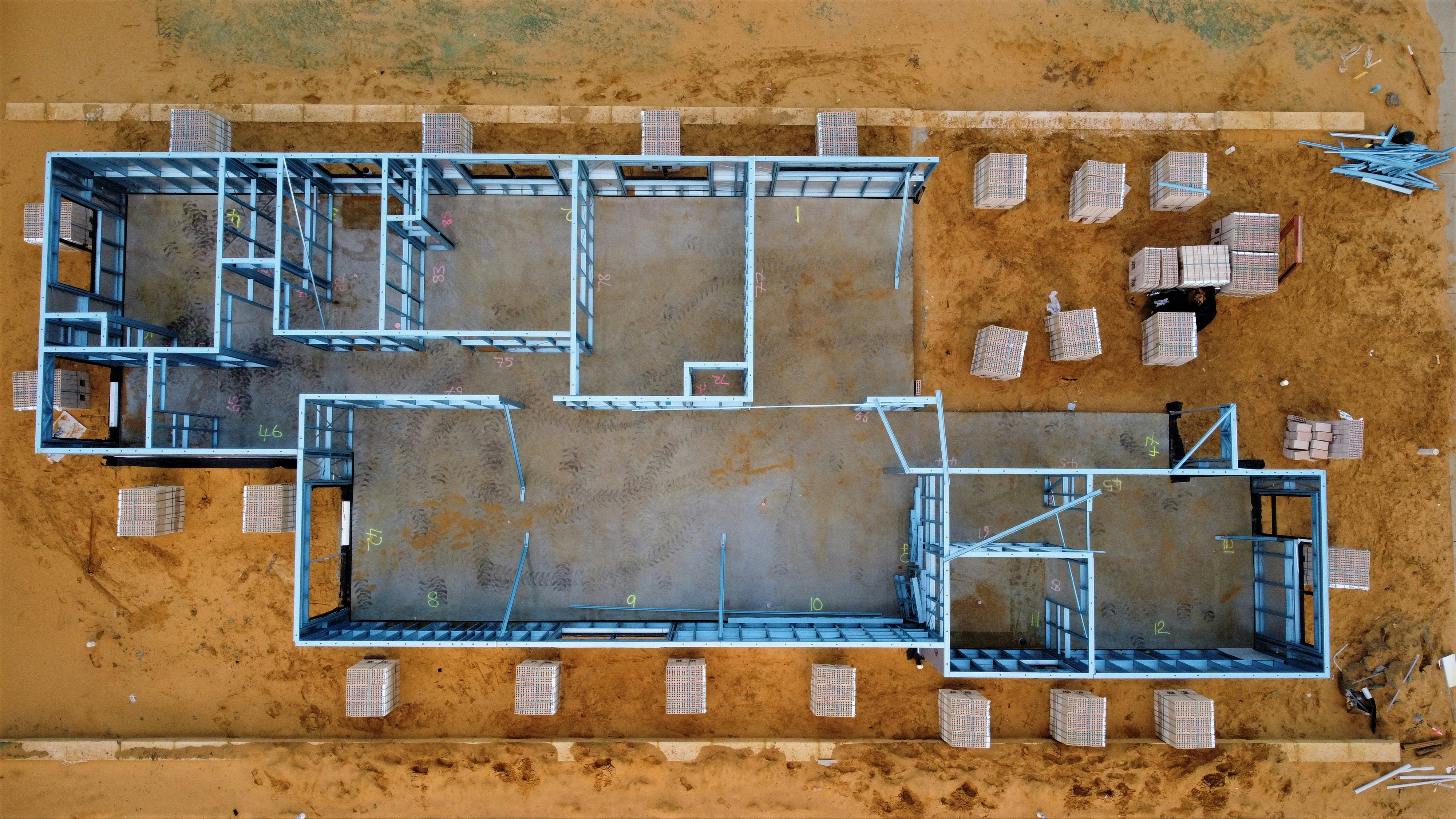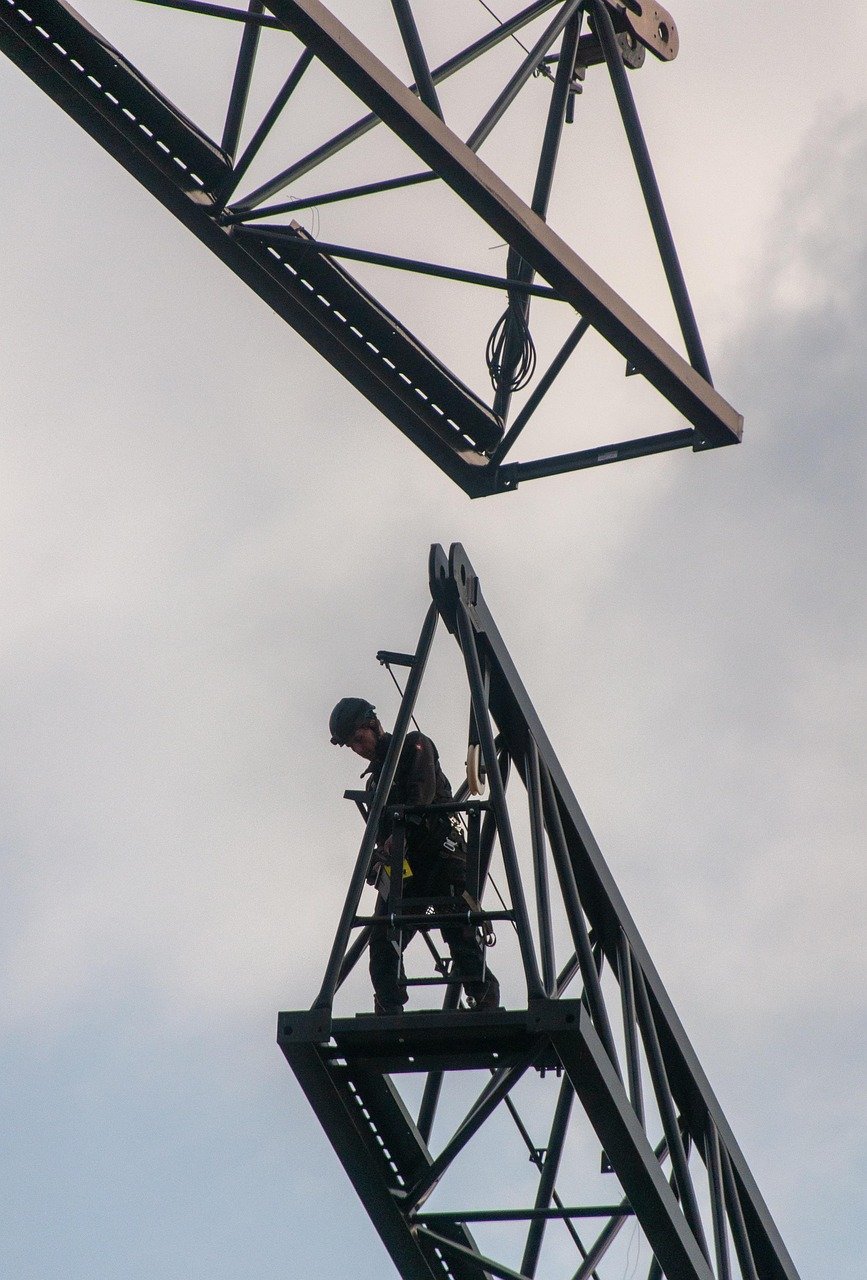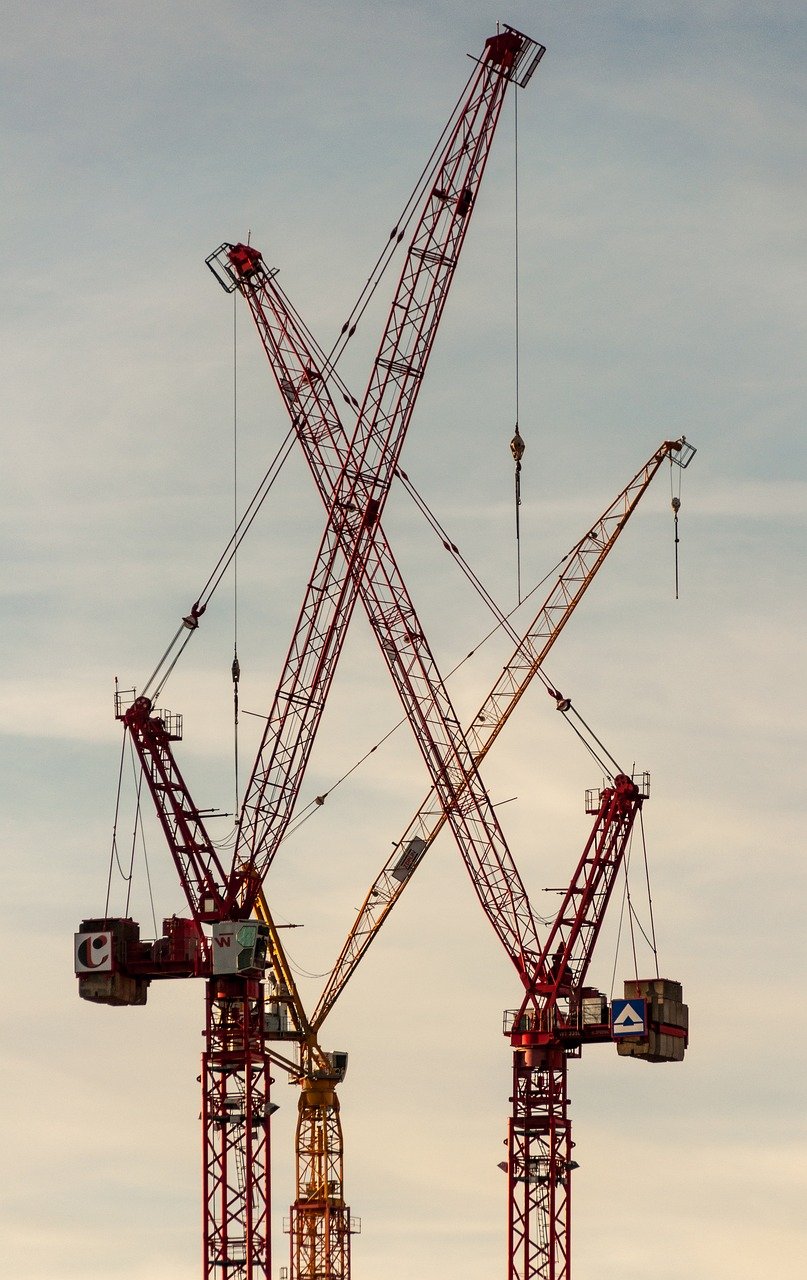Introduction to AI in Construction Safety
In the construction industry, safety is a paramount concern, as it not only affects workers’ health but also the overall project efficiency and success. Ensuring rigorous safety checks on construction sites has traditionally been a manual process, fraught with challenges that often lead to inefficiencies and increased risks. Construction professionals face obstacles such as human error, oversight in routine checks, and the intricate nature of compliance with various safety regulations.
As construction projects become more complex, maintaining a comprehensive safety management system is imperative. This is where artificial intelligence (AI) tools come into play. AI can transform how safety checks are conducted on construction sites by streamlining processes and making them more systematic. The adoption of AI-based safety management systems can lead to enhanced monitoring, predictive analysis, and real-time data processing. These capabilities allow construction managers to identify risks before they lead to incidents, thereby significantly improving worker safety.
Moreover, AI tools can facilitate compliance with safety regulations through automated reporting and documentation processes. By leveraging technologies such as machine learning and computer vision, construction teams can analyze vast amounts of data related to site conditions and safety protocols, leading to more informed decision-making. This proactive approach minimizes the reliance on manual oversight and reduces the likelihood of human error in safety assessments.
Investing in AI for construction safety not only optimizes operational efficiency but also fosters a culture of safety within the workforce. By integrating AI solutions, construction firms can expect to see a significant reduction in accidents and incidents, enhancing their overall reputation as responsible employers. The shift towards AI-driven safety management represents not only an evolution in technology but also a commitment to prioritizing safety in the ever-evolving landscape of construction.
Understanding AI Tools for Site Safety
The integration of artificial intelligence (AI) technologies within the construction industry has ushered in a new era of site safety management. AI tools are designed to enhance the security and efficiency of construction sites by leveraging advanced algorithms and data analytics. These tools provide capabilities that significantly improve the monitoring and management of safety protocols, helping to mitigate risks and ensure compliance with standards.
One of the key functionalities of AI in construction is its ability to automate safety checks. Traditional methods of safety inspections often rely on manual processes, which can be time-consuming and prone to human error. AI tools streamline these processes by utilizing computer vision technology and machine learning algorithms to identify potential hazards and compliance issues. This automation not only saves time but also enhances the accuracy of inspections, making it easier to uphold safety regulations.
Furthermore, AI tools facilitate real-time monitoring of construction sites. Utilizing sensors and cameras, these tools can continuously gather data and assess the environment for safety risks. By analyzing this data, AI systems can provide immediate feedback to site managers, enabling them to address issues proactively. This real-time approach fosters a culture of safety, as it encourages workers to adhere to established safety protocols and respond to hazards promptly.
Additionally, AI tools can support training and awareness initiatives by identifying trends in safety incidents and suggesting improvements. Through data analysis, these systems can highlight areas requiring additional training or resources, allowing construction companies to tailor their safety programs effectively. This proactive stance not only enhances site safety but also promotes a comprehensive understanding of best practices among workers.
SiteAware for Hazard Recognition
SiteAware is an innovative AI tool designed specifically for hazard recognition within the construction industry. Using advanced image recognition technology, SiteAware analyzes visual data captured during site inspections to identify potential hazards that may pose risks to workers and the project environment. By employing this cutting-edge technology, SiteAware allows construction teams to proactively manage safety concerns, thus mitigating potential incidents on-site.
One of the key features of SiteAware is its capability for visual documentation. As construction sites continuously evolve, maintaining comprehensive records is vital for safety management. SiteAware enables users to take photos of various areas and elements within the site and utilizes its image processing algorithms to evaluate these images for unsafe conditions. This documentation serves as both a historical record and a reference point for ongoing safety assessments.
Another significant aspect of SiteAware is its automated reporting feature. Once hazardous conditions are identified, SiteAware generates detailed reports that can be shared with project managers and safety officers. This feature not only saves time but also facilitates swift decision-making in addressing safety issues. The reports include images, location data, and hazard descriptions, equipping teams with precise information to take corrective action seamlessly.
In real-world applications, SiteAware has demonstrated its effectiveness. For instance, a construction firm utilizing SiteAware was able to identify and rectify a series of overlooked hazards, such as exposed electrical wires and unguarded trenches, before they could result in accidents. Such practical examples illustrate the potential of employing AI tools in enhancing worker safety, ultimately fostering a culture of precaution and vigilance in construction projects.
OpenSpace for Safety Monitoring
OpenSpace is an innovative platform designed to enhance safety monitoring in the construction industry through real-time site documentation. By utilizing advanced 360-degree imaging technology, OpenSpace provides teams with a comprehensive view of the job site, ensuring that every detail is documented accurately and promptly. This capability allows project stakeholders to track progress more effectively while also identifying potential safety concerns before they escalate.
The tool’s functionality is pivotal in maintaining safety compliance on construction sites. Through regular imaging, teams can compare current conditions against project plans, helping to ensure that safety protocols are adhered to at all times. This proactive approach minimizes risks associated with non-compliance and fosters an environment where safety is prioritized. Furthermore, OpenSpace’s ability to archive images creates a visual timeline that can be invaluable for future reference, inspections, or audits, thereby facilitating adherence to safety regulations.
Effective communication is essential in construction projects, and OpenSpace promotes collaboration among team members. The platform enables easy sharing of images and information, allowing workers to swiftly discuss safety issues or operational challenges as they arise. This level of transparency not only enhances teamwork but also empowers employees to raise safety concerns, knowing they will be addressed promptly. With OpenSpace, project managers can also receive instant feedback on site conditions, leading to quicker decision-making and more responsive adjustments to safety measures.
In summary, OpenSpace serves as a vital tool for safety monitoring by offering real-time documentation and advanced imaging technology. Its capacity to track progress, ensure compliance, and improve communication makes it an essential asset in the construction industry’s ongoing effort to enhance site safety and efficiency.
Tool #3: Custom ChatGPT Checklist Bot for Automation
The construction industry has increasingly turned to digital solutions to enhance site safety, and one innovative tool in this domain is the Custom ChatGPT Checklist Bot. By leveraging artificial intelligence, this chatbot can generate personalized safety checklists and reminders tailored to the specific needs of a project. The implementation of such a bot not only streamlines safety procedures but also fosters a proactive safety culture within teams.
To create a Custom ChatGPT Checklist Bot, one should start by defining the key safety parameters specific to the construction site. Users can input details about the particular project, type of construction, and any relevant regulations. The AI utilizes this information to generate comprehensive checklists that incorporate all necessary safety measures. This customization ensures that no critical safety aspect is overlooked, ultimately leading to enhanced site safety.
One significant advantage of utilizing a digital checklist is the automation of form generation, which saves valuable time and effort. Construction managers can effortlessly access and distribute checklists, ensuring all team members are aware of their responsibilities. Moreover, the digital format allows for easy updates in response to changing regulations or conditions on site, ensuring that the safety measures remain relevant and effective.
Furthermore, the Custom ChatGPT Checklist Bot enhances team collaboration. Team members can engage with the chatbot to ask questions, report issues, or provide feedback directly related to safety procedures. This function not only streamlines communication but ensures that everyone remains informed and accountable, fostering a culture of safety throughout the team. In adopting this AI-driven approach, construction companies can significantly boost their safety protocols while also enhancing overall operational efficiency.
Integrating AI Tools into Daily Operations
Integrating AI tools into daily operations within the construction sector requires a structured approach that aligns technological capabilities with project objectives. The first step involves assessing specific project needs, which can vary depending on factors such as project size, complexity, and timeline. Conducting a thorough evaluation will not only clarify the objectives but also assist in selecting the most suitable AI tools tailored to those objectives. These tools may include project management software, predictive analytics, or onsite drones, each contributing uniquely to enhancing efficiency and safety.
Once the right tools are identified, the next phase is training the team on their effective utilization. This process should be comprehensive to ensure all team members, regardless of their technological proficiency, feel confident in using the AI solutions. Training sessions can include workshops, hands-on demonstrations, and continuous support from IT professionals or AI tool specialists. By fostering an environment of learning and support, teams with minimal technological experience can gradually acclimatize to these innovative tools.
Furthermore, cultivating a culture that embraces technology is crucial for successful integration. Leadership must underline the importance of adopting AI tools, demonstrating their benefits not only in productivity but also in enhancing site safety. Encouraging open dialogue about the advantages and addressing any concerns upfront promotes a positive attitude towards the integration process. A cultural shift towards technology-driven operations paves the way for smoother transitions and inspires team members to actively participate in harnessing AI capabilities.
Ultimately, integrating AI tools into daily construction operations is not merely about technology adoption but also involves building a knowledgeable community that is eager to utilize these advancements to ensure project success and enhance worker safety.
Case Studies: Successful AI Implementations
In the realm of construction, the integration of artificial intelligence (AI) tools has revolutionized the approach to site safety. Several case studies serve as compelling illustrations of how these technologies have been employed to address specific challenges within the industry. One such instance is the implementation of AI-driven safety monitoring systems at a large-scale construction site in Chicago. The challenge faced was frequent incidents of falls, a common hazard in construction. By installing AI-powered cameras and sensors, the site management was able to monitor workers’ actions in real-time, analyzing their movements to identify risky behaviors. The solution led to a significant reduction in incidents, as safety personnel were alerted instantly and could intervene promptly, ensuring a safer working environment.
Another noteworthy example comes from a construction firm in London that utilized AI for predictive analytics. The challenge here was accurately foreseeing potential safety breaches before they occurred. By leveraging machine learning algorithms that processed historical data on site incidents, the company was able to predict which areas of the site were at higher risk. The implementation of these AI tools resulted in the optimization of safety protocols and training programs tailored to the identified risks, ultimately leading to enhanced compliance and a measurable decrease in accidents.
Furthermore, a pioneering project in Sydney integrated wearables equipped with AI capabilities among workers. The goal was to monitor environmental conditions and workers’ physical states to mitigate health-related risks. The AI tools processed data on temperature, humidity, and heart rate, providing valuable insights that allowed supervisors to implement timely breaks and hydration reminders. This approach not only improved overall worker well-being but also fostered a culture of safety and awareness on site.
These case studies exemplify the vast potential and transformative impact of AI tools in enhancing site safety within the construction sector. Each example demonstrates how addressing specific challenges with innovative technology yields significant improvements, serving as a source of inspiration for industry professionals contemplating the adoption of similar practices.
Measuring the Impact of AI on Site Safety
As construction teams increasingly adopt artificial intelligence (AI) tools to enhance site safety, it is crucial to establish a clear framework for measuring their impact. One method to evaluate the effectiveness of these technologies is through key performance indicators (KPIs). These indicators can serve as benchmarks to assess improvements in safety, efficiency, and compliance on construction sites.
One of the most vital KPIs is the reduction in incidents pertaining to workplace injuries. By analyzing historical data, teams can establish a baseline number of reported incidents prior to the implementation of AI tools. Following the deployment of these technologies, ongoing monitoring allows for real-time data collection, which helps determine the frequency and severity of incidents post-implementation. An observed decrease can provide a clear indication of the positive influence of AI on site safety.
Another significant KPI is the time savings achieved in conducting safety checks. Many AI tools can automate routine inspections and reporting, which traditionally consume valuable time and resources. By measuring the reduction in the time taken for safety checks before and after adopting AI solutions, organizations can quantify efficiency gains. This not only enhances productivity but also enables safety teams to focus their efforts on other critical areas.
Furthermore, improvements in compliance rates can be a telling indicator of AI’s impact on site safety. Compliance with safety regulations and protocols is essential for any construction project. By leveraging AI-driven analytics, teams can monitor adherence to safety protocols more effectively, thereby identifying potential areas of non-compliance early. A subsequent increase in compliance rates would likely suggest that AI tools are facilitating better safety practices and awareness among workers.
In conclusion, measuring the impact of AI on site safety involves a systematic approach focused on key performance indicators such as incident reduction, time savings in safety checks, and compliance rate improvements. By gathering and analyzing relevant data, organizations can effectively demonstrate the value of their AI investments, paving the way for continued advancements in construction safety.
Tips for Overcoming Common Challenges
As construction professionals increasingly adopt AI tools to enhance site safety, they may encounter several common challenges. Addressing these obstacles effectively is crucial for maximizing the benefits of AI technologies. One significant hurdle is resistance to change among team members. To counteract this, it is essential to communicate the advantages of AI clearly, focusing on how these tools can streamline processes and improve safety outcomes. Engaging staff early in the implementation process by providing opportunities for feedback can foster a sense of ownership and acceptance.
Another challenge often faced is a lack of technical skills among workers. This gap can be addressed through comprehensive training programs tailored to different skill levels. Offering workshops, online courses, and hands-on sessions can facilitate the acquisition of necessary technical knowledge and confidence in using AI tools. A mentorship system, where more skilled employees guide others, can also enhance the learning experience and reinforce a supportive work environment.
Integration with existing systems poses yet another challenge. Construction sites typically rely on various platforms and software, which can complicate the adoption of new AI technologies. To ensure a smooth transition, conducting a detailed assessment of current systems is vital. This assessment should identify compatibility issues and the need for potential adjustments or upgrades. Collaborating closely with AI vendors can help customize solutions that fit seamlessly into the existing workflow.
Finally, it’s essential to cultivate a culture of continuous improvement and innovation within the organization. Encouraging an open mindset toward technology adoption, combined with regular evaluations of AI tool efficacy, can help maintain engagement and optimize their use. By proactively addressing resistance to change, enhancing technical skills, and ensuring proper integration, construction professionals can effectively navigate the challenges associated with AI implementation.
Conclusion: The Future of Site Safety with AI
As we navigate the evolving landscape of the construction industry, it is evident that artificial intelligence (AI) tools play a pivotal role in enhancing site safety. The integration of AI technology has been proven to significantly reduce workplace hazards and improve overall safety performance. By employing predictive analytics and real-time monitoring, construction professionals can proactively identify potential risks, thus fostering a safer working environment.
Throughout this discussion, we have highlighted the various applications of AI tools, such as drones for site inspections, wearable devices for monitoring worker health, and machine learning algorithms for analyzing safety data. These innovations not only streamline operations but also empower teams to make informed decisions based on data-driven insights. The ability to preemptively address safety concerns is a game-changer for construction projects, where risk management is of paramount importance.
Furthermore, embracing AI technologies is crucial for the construction industry to keep pace with global safety standards and regulations. The traditional approaches to site safety are rapidly becoming obsolete, necessitating the adoption of modern solutions. As construction professionals look to increase efficiency and productivity, the implementation of AI tools should be viewed as an essential strategy in reducing incidents and enhancing compliance.
The future of site safety in construction is intertwined with the advancements in AI. As technology continues to evolve, so too will the capabilities of AI tools, offering even greater support for safety initiatives. Construction professionals must embrace these technologies to safeguard their teams and promote a culture of safety that prioritizes well-being on every site. Moving forward, the transformative impact of AI on construction safety is expected to yield significant benefits, driving the industry toward a safer, more efficient future.




